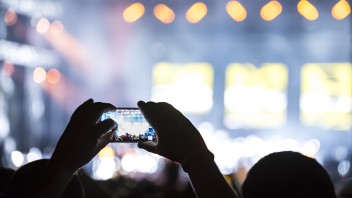
Many communities find themselves using social media to promote events, building awareness and engagement. In fact many might start using social media platforms at this point due to accessibility and low start-up costs. However, this is, in part overlooking the fact that social media can help during an event, can provide the context for an event and help embed and extend the impact of that event.
Strategic and ground level changes in economic systems require networking, exchange of ideas and learning. Therefore, events and social media sit hand in hand as means of enabling communities to revision their economic future and to share what they learn. Such was the subject of three recent online social media sessions held by REconomy Project. The aim of which was to introduce a number of easy to use social media tools and tips for events and provide a space for exchange on this topic. Here is some of what we discussed.
Social media at an event
Notably in social change movements there is a great deal of experimentation going about how to run engaging events. One way that social media facilitates this progress is to provide a way of allowing people inside and outside the physical event to increase their participation.
- Using a hashtag (#) before and during will link discussions on Twitter and other platforms about that event
- Allocate a member of the event team to use and lead on social media at an event: seed questions and discussions to increase participation, to link ground activities with online comments, share and report images and resources from the event to the wider world
- If you are able to adjust your programme as you go, assess the progress of the event and how to frame the programme through real-time feedback from social media.
- You can encourage online and offline networking by promoting the hashtag for your event within the event literature. This way people can start networking before they meet in person and follow up after the event.
- Don’t forget that any material you collect at the event can be shared in real-time and are likely to increase the circulation of your social media posts.
- Material collected and archived on social media (i.e., captured on your news streams, or on Instagram) can also be useful promotional material for your next event. This includes photos, film, quotes, questions…
- And of course if you are running a campaign connected to a big event or a fringe event the hashtag is the perfect way to attract attention to your activities whilst people are mostly focused on ‘the main stage’ event.
Social media as the place of events
 Of course with all this online networking going on social media is a logical place to hold an event that can be, to an extent, accessible to anyone with a computer and bandwidth. Being ‘present’ takes on a whole new feel when you are online together rather than in a room.
Of course with all this online networking going on social media is a logical place to hold an event that can be, to an extent, accessible to anyone with a computer and bandwidth. Being ‘present’ takes on a whole new feel when you are online together rather than in a room.
 Online events usually takes good facilitation and because of the rapid and sometimes clunky exchange that can occur online due to varying bandwidth. And if you are planning an online event don’t expect the recruitment, preparation or follow-up to be any less time consuming than physical events.
Online events usually takes good facilitation and because of the rapid and sometimes clunky exchange that can occur online due to varying bandwidth. And if you are planning an online event don’t expect the recruitment, preparation or follow-up to be any less time consuming than physical events.
Extending the example above the hashtag provides a means of binding people together as an event. Events on Twitter are often called Twitter Chats.
However, you can also organise a specific timed topic exchange within a forum, on Facebook (using the comment box under a photo or article) or a Hangout (Google+) where you can record and share the live video chat in real time or afterwards, for a broader group.
Making the most of social media after the event
Whatever the purpose from a networking opportunity to project development it can be really useful to maintain momentum following an event. Keeping the ‘tail’ of an event live on social media can mean:
- Inviting feedback by social media – either qualitative, with a quick Twitter / Facebook poll or more fully by integrating a link to a Survey Monkey or Typeform
- Encouraging further networking (who can do it all within one event anyway!)
- Sharing action points
- Distributing content from the event across the following days or weeks
- Using video footage to share the outcomes more widely and visually
- Reporting on the event by blog
- Storify allows you to gather the posts and information associated with the narrative of an event in one place: images, Twitter posts, website resources, videos. These then become very rich synopses for people attending the event and many other people, an aid memoire for follow-up work and networking, and perhaps easier than asking note-takers to submit their scribbles after the event.
Recruiting to events with social media
Before we leave the subject entirely we can come back to where we started – using social media to bring people to your events, and into your network. Things that help you recruit people:
- In between events keep your social media networks busy and active. This will keep people interested in what you do and then when an event is available through you and your sites they will be more inclined to attend or at least circulate your info.
- Use the materials that you already have to attract people to the themes of your event: circulate archive video material or blogs on related topics.
-
Remember your local hashtags (e.g., #DevonHour or forums e.g. http://www.creativetorbay.com/ ) to highlight events to people in your area.
- Facebook events also provide a useful page for sharing and updating event information. With a modest budget you can boost the circulation locally or by various demographic information.
- Use online platforms us as Eventbrite, Ticket Tailor, Meetup or Amiando to manage bookings and make the online experience easy for everyone.
- Use photos from behind the scene preparations to build last minute energy and buzz around your event. Instagram is a great platform for sharing images, and it integrates well with other platforms too.
Mostly this is about enjoying being with other people, benefiting from their experience and sharing what we do wherever we are in the world. It’s about building communities and engagement around common interests – online and offline. An extension of the practices of real life, the virtual world allows us to try things out with people that otherwise we might never meet.
Blog written by Anna Lodge, working with the REconomy Project Team at Transition Network. With thanks to Phillippa Rose for her invaluable contributions and the participants of the online skill shares.
This REconomy Project work is generously supported by the Friends Provident Foundation.

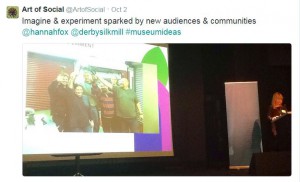
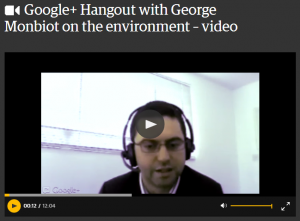
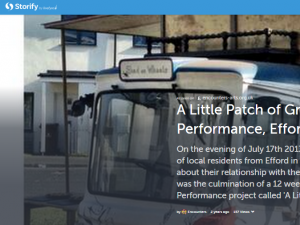
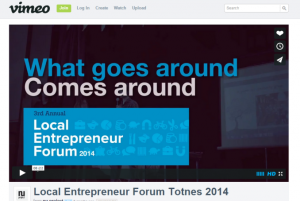

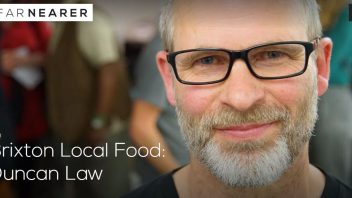



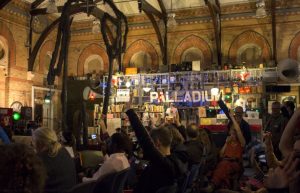

Connect